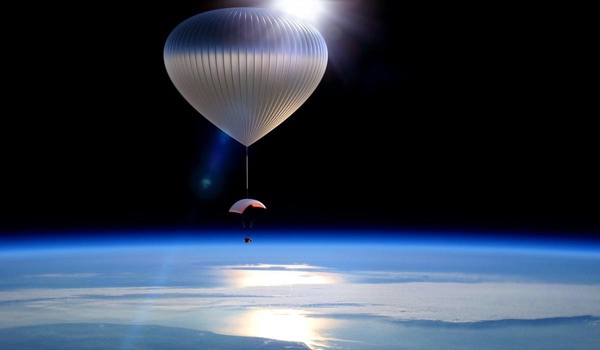World View: a new capability for the suborbital research and education marketby Alan Stern
|
| While rockets and balloons are complementary tools that serve different functions in space access—like forks and spoons at the dinner table—there are many attributes that balloons can offer that no suborbital rocket can. |
At World View, we applaud the efforts of these suborbital rocket companies to open space access for the research and education market (REM). We also applaud the efforts of government agencies like NASA to begin offering grants to researchers and educators to build and fly payloads aboard reusable, next-generation suborbital rocket vehicles. And we salute the REM community’s deeply positive interest in next-gen suborbital research through attendance at Next-Gen Suborbital Researchers Conferences, through proposal writing to win awards to fly on next-generation vehicles, and through the efforts within the Commercial Spaceflight Federation (CSF) to foster this new field.
At the same time that reusable rockets are preparing to come on line to service REM needs, we’re adapting our balloon-borne suborbital tourist vehicle, itself called World View, to be an effective platform for the REM market place in 2016–2017. We’re also putting in place smaller suborbital vehicles in our Tycho line that can carry REM payloads into service earlier, beginning in 2015.
World View’s near-space access distinction is that our vehicles do not require rocket propulsion to reach high altitude. Instead, they use balloon technology capable of lifting payloads ranging from a few kilograms to a few tons to altitudes as high as nearly 40,000 meters. At these altitudes—where the sky is black and the Earth’s horizon is curved—important applications exist in a wide variety of REM fields, including atmospheric science, Earth remote sensing, education, and astronomy. Important applications also exist for the in-space demonstration of systems, subsystems, and sensors destined for orbit, i.e., ‘TRL-raising,” And a host of commercial surveillance, communications, and entertainment opportunities present themselves at these altitudes as well.
While rockets and balloons are complementary tools that serve different functions in space access—like forks and spoons at the dinner table—there are many attributes that balloons can offer that no suborbital rocket can. These include:
- Gentler rides, so that payloads do not have to be designed and tested to withstand sustained high acceleration g-forces during launch and entry, simplifying development and test challenges, and therefore also lowering costs for payloads and payload specialists.
- Longer flight durations of hours (and even days) at altitude on balloons, versus the minutes at altitude that currently envisioned next-generation suborbital rocket systems offer.
- Lower altitudes where both research and commercial applications can achieve higher ground resolutions, e.g., which are better suited to research in the crucial research altitude regimes of the stratosphere.
- Greater range over the Earth than rockets, which plan to fly back to their launch site and can’t traverse significant ground, air, and space paths for REM applications.
- An absence of zero-g, which in many cases creates unwanted REM payload design and operational complexities; avoiding zero-g simplifies development and test and typically lowers the cost to fly both payloads and payload specialists.
- A lower cost of flight, which expands markets and widens opportunities for frequency of flight.
| We believe that suborbital REM space applications are as unlimited a greenfield now as personal computer applications were in the late 1970s |
We believe these attributes will foster many new REM applications in space, and we are proud to already be involved in demonstrating that in two important ways. First, we have placed three pathfinder payloads under agreement to fly as REM demonstrators on our Tycho and World View vehicles. These pathfinder payloads include in situ radiation monitoring, remote sensing imaging of the upper atmosphere to study its meteoroid environment, and an education payload centered on detecting the ozone layer. Second, we and our partner Paragon Space Development Systems have been recently been awarded a NASA Flight Opportunities Program contract to provide flight services to NASA suborbital, near-space payloads during 2015–2017.
At Word View, we believe that suborbital REM space applications are as unlimited a greenfield now as personal computer applications were in the late 1970s. If you are interested in learning more about World View and our ballooning systems for REM applications, go to http://worldviewexperience.com/research-education/ or contact this author at astern@worldviewexperience.com.
